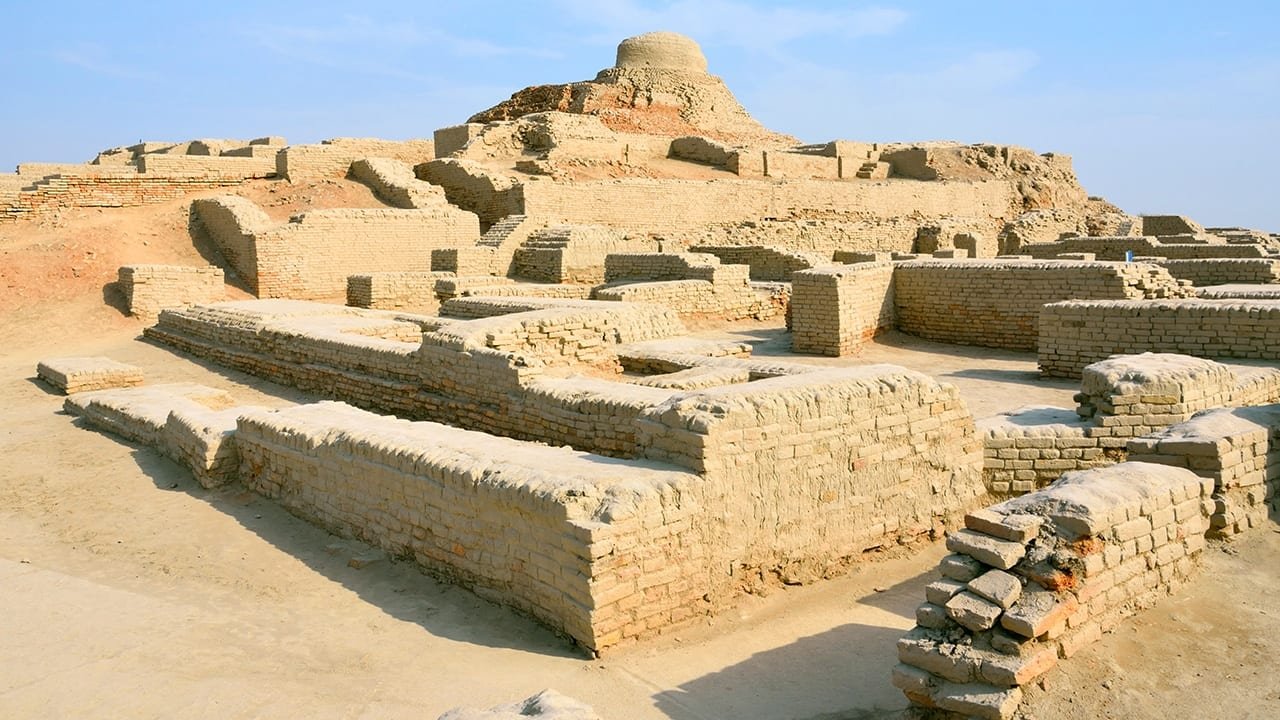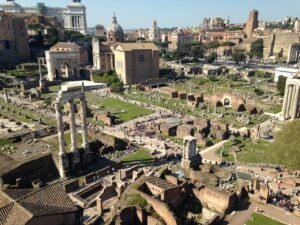Since its rediscovery, scholars have gained much insight into the Indus Valley Civilization. Alongside Mesopotamia and Egypt, it ranks amongst the earliest human societies. People there cultivated wheat, barley and cotton while producing leather goods and various crafts.
Additionally, they mastered city planning; every major city featured streets and lanes of standard width.
Religion
The ancient Indus Valley Civilization left no written record of their beliefs, with deciphered written language still not understanding why religion arose in local and regional practices emphasising agriculture and trade. Archaeologists can still gain some idea about their faith through physical evidence found.
Mohenjo-daro and Harappa were built on precise grids that demonstrate an exceptional level of urban planning. Brick streets paved to protect against noise, odours and thieves were lined with brick. Houses were made out of baked brick with windows facing towards central courtyards for airflow; private wells provided water; bathrooms included clay pipes connecting directly with city sewers that fed into nearby rivers or seas.
Many steatite seals discovered at Indus sites contain religious or administrative inscriptions. One such steatite seal, known as the Pashupati seal, features an image that may depict a god wearing three-horned headgear surrounded by animals – known as Pashupati himself!
Seals depict religious symbols and animals hunted or raised for food or fur, such as Indus Valley people worshipping a Mother Goddess and Father God, along with separate gods representing each type of animal they hunted or raised for food or fur. According to legend, Indus Valley people were also said to believe they had gods representing all different types of animals they hunted or raised for meat or fur production.
Indus Valley people likely offered sacrifices of sheep, goats, cattle and other animals to their gods as part of their prayers. Many may also have practised yoga and meditation techniques. Some in the region may also have known about and practised some form of tree meditation using an Acacia or Pipal tree as their symbol, or perhaps had been protected by their guardian spirit – symbolized as a tiger spirit on seals depicting their existence.
Religion within the Indus civilization was difficult to pin down due to its short lifespan of approximately 500 years. Subsequent village cultures that had some influence from Indus Valley civilization but maintained their distinctive traditions continued the practice of Indus religions, such as Dravidian culture in southern India or a mix of Indus, non-Aryan, Vedic, and post-Vedic beliefs that developed across northern India.
You may also like: Civilizational Contributions of the Indus Valley Civilization
Agriculture
The Indus River valley, found between modern Pakistan and India, provided ideal soils for agriculture. People in this region cultivated wheat, barley and peas along with pulse crops such as beans and lentils, as well as oilseed crops such as mustard seed and sesame. Toiling was done using animals before harvesting was complete.
The Indus Valley Civilization likely was one of the first civilizations in history to develop extensive irrigation systems to grow enough food for its citizens living in towns. They were also highly inventive in harnessing river power by creating canals, dams and reservoirs – using their rivers’ potential energy as much as possible.
At its height, the Indus Valley Civilization comprised two large cities–Harappa and Mohenjo-Daro–and numerous smaller ones characterized by clean streets, brick houses, impressive granaries and bathrooms.
Evidence of a sophisticated metalworking industry, with tools like axes and chisels, has been discovered at Mohenjo-Daro and Kalibangan sites. Pottery was another major industry, and while people were skilled at building with bricks – brick remains can still be found at those two locations today! Other crafts included jewellery-making, metalwork and shell-working.
Indus Valley people had their form of writing that had yet to be deciphered; thus, it was impossible to know their political system or religion. Yet many engraved seals and terra-cotta figurines have been discovered, illustrating their culture.
The Indus Valley Civilization likely had an intricate trade system with other cities both inside and outside India. People traded goods like terra-cotta pots, beads and jewels like carnelian and lapis lazuli among themselves.
Archaeological evidence demonstrates that the Indus Valley Civilization exhibited few negative characteristics typically seen in early civilization, including warfare, slavery and social conflict. This may have been because people were so successful at agriculture that no military force or strong state was needed; indeed, it is believed that their civilization disbanded due to changing river patterns rather than war.
Trade
The Indus Valley Civilization had an extremely efficient trade system. They imported raw materials such as bricks and pottery for manufacturing goods like beads, pottery and figurines from soapstone. Furthermore, gold, silver ornaments and dishes, as well as copper tools and weapons, were traded extensively among them.
Cities constructed on raised mounds by ancient Mesopotamians were remarkable, constructed on raised mounds to prevent flooding. Mohenjo-daro was particularly remarkable: its walls reached up to 12 meters in height, lined with drains that led to channels which ultimately led into its granaries and river, as well as boasting an advanced plumbing system involving pipes connecting every house to larger channels which led into sewers before pumping the waste out into the water – and advanced design even by modern Mesopotamian standards.
A sewage system also kept streets clean, similar to plumbing. Like its counterpart, it was designed for efficiency and sanitation by the Indus people, who valued hygiene as part of their innovations. They even discovered a new metal source – tin – which allowed them to create various items, such as kitchenware and jewellery.
Most city dwellers appear to have been experts at one thing or another, living together with others who pursued similar occupations in well-defined neighbourhoods. Craft shops may have offered goods like textiles, jewellery and metallurgy. Indus sites contain large granaries as evidence that city dwellers were more than mere farmers; they represented an urban population highly skilled in various trades.
The Indus people conducted extensive international trade with Sumerians and other Middle Eastern cultures, as evidenced by Egyptian spools of thread, lapis lazuli beads from Afghanistan and Indus script on seals; unfortunately, however, its meaning has yet to be deciphered, leaving us uncertain as to its contents.
Harappa and Mohenjo-daro were two major Indus Valley cities with sizable populations at their zenith, each boasting hundreds of thousands of inhabitants during its height. Due to the cities’ large populations and sophisticated street plans, both held large populations. Their size suggests an unprecedented level of organization far surpassing anything to be expected from primitive societies; some scholars suggest there was some type of central authority responsible for maintaining law and order; however, it could equally have served as regional capitals overseeing surrounding smaller settlements.
Art
The Indus Valley Civilization was an artistic and cultured society, with evidence evident in ornamented seals and terra-cotta figurines that have been unearthed. Additionally, stone sculptures such as this steatite statue depicting a priest-king were created – although such statues are relatively uncommon since most Indus Valley statues tend to be smaller and simpler in design.
Indus Valley art was not as complex or elaborate as in Mesopotamia, yet still of high quality. These sculptures exhibit an early knowledge of anatomy; for instance, this figure displays very realistic legs and arms, while it appears to possess fluid movements which give an impression of movement and life.
Animal motifs are an integral part of Indus Valley art and may have had religious connotations; specifically, the tiger was often depicted as a powerful figure. Additionally, its people were highly religious – many seals in Indus Valley art contain animal figures with horns indicating that these creatures may have been worshipped.
Another popular motif among Indus Valley artworks is a man carrying something on his head; this could represent either a staff or a wand. Additionally, the people of Indus loved to wear jewellery, with one of their signature artworks featuring a Pashupati seal depicting God seated yoga-like with animals surrounding. These people also created some impressive cities like Harappa and Mohenjo-daro that featured impressive master plans as well as public buildings like Great Baths for purification ceremonies or rituals.
Archaeologists have discovered the remains of the Indus Valley civilization in Pakistan and India, studied by archaeologists. Although we may never fully understand why this large civilization collapsed, several factors may have played a part; one such factor could have been environmental degradation caused by years of overexploitation of resources and overpopulation; another possible factor could have been climate change caused by shifting monsoon patterns.




